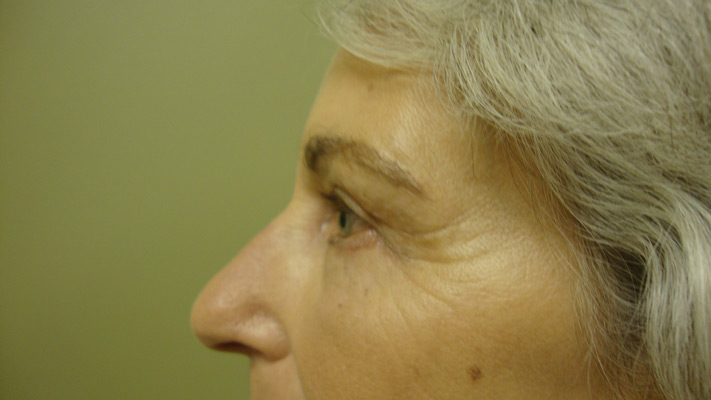 Blepharoplasty, or eyelid surgery, is a great way to achieve positive cosmetic results.
Blepharoplasty, or eyelid surgery, is a great way to achieve positive cosmetic results.
These simple and low-risk outpatient procedures can provide you with a more youthful appearance, and greatly raise your levels of confidence. These procedures are popular, but a natural part of the operation and recovery process revolves around eyelid swelling.
Because the surgery requires simple incisions, the operated-upon area will be tender and require time to heal properly.
Patients may encounter post-surgery swelling during this timeframe, but with the right ways to cope, patients will be able to keep this time to a minimum and recover as quickly as possible. So, what are the different types of blepharoplasty and how can you reduce swelling after your surgery?
Upper lid blepharoplasty
In some people, their upper eyelid takes on a hooding effect, causing them to have a tired appearance. For these people, an upper eyelid blepharoplasty can brighten their facial appearance and make them look more youthful and alert by removing this excess skin. This procedure is very routine, done under mild sedation with minimal discomfort and has a short recovery time. With the use of a concealed incision in the upper fold, your surgeon can bring a new appearance to your face and provide the most improvement of any facial cosmetic procedure at a relatively low cost.
Lower lid blepharoplasty
For many people, dark circles under the eyes can form over time due to natural fat or hollows in the orbital rim, leading to a tired or unhealthy appearance. With the incisions used to decrease the appearance of “bags” under the eyes, patients will find that they have a more lively and healthy overall appearance. This procedure is also relatively routine, and while having a relatively quick recovery time, can lead to bruising and swelling after eyelid surgery.
No swelling in your eyelid skin after blepharoplasty isn’t something that you can realistically expect, but after a downtime of less than a week your face will take on a much more youthful appearance.
So, how can you take care of yourself and keep swelling down after blepharoplasty?
The right nutrition
There’s no miracle cure to eliminate your eyelid surgery swelling time completely, but you will be able to recover more quickly if you give your body the fuel it needs. Eat light, nutritious meals and stay properly hydrated, and if you have the chance, try some antioxidant-packed smoothies or vitamins. You’ll be helping your body heal more quickly if you take care to keep up good nutritional practices.
Keep your head elevated
Swelling and inflammation are caused by increased blood flow to an area. This is your body’s natural response to an injury as the healing process begins, but too much can be irritating and painful during your recovery. When you’re resting at home, keep your head elevated and let swelling stay down.
Avoid strenuous activity for a few days
With your body recovering from surgery, you don’t want to put too many demands on your body. Exercise over the few days following your procedure can be exactly the wrong thing to do if you’re trying to reduce eye swelling. After your surgery, take some time away from the gym and any nonessential strenuous activity. This is one of the few times where less exercise can be better.
Apply ice or cold packs to the area
Swelling and inflammation can make it more difficult to relax or sleep, so when you need to reduce swelling for your own comfort, applying cold to the area can help you keep things under control. Exposure to cold can restrict the blood vessels, meaning less inflammation. Always pay attention to the advice of your surgeon when considering using ice or cold packs on your eyelids after your procedure.
How long will swelling last after surgery?
Immediately after your surgery, your swelling will be at its most severe. Your upper and lower eyelid skin will be tender and puffy, and you’ll want to avoid straining yourself during this time. If conditions are right, however, you’ll be able to recover with downtime around a week.
Your face will look completely natural in a matter of just a few weeks, but taking the right actions from the start and avoiding the wrong behaviors after your upper or lower lid blepharoplasty will have a powerful impact on your recovery time. Put your faith in Siwy Plastic Surgery, and recover quickly from your procedure with incredible results. Contact us today and begin the process for yourself.